In today’s fast-paced world, ensuring our children have access to kids healthy snacks for school is paramount. This comprehensive guide delves into a variety of nutritious and delightful snack options that are perfect for school-aged kids. From fresh fruits and veggies to whole grains and dairy delights, discover how to keep your child’s energy levels up and their minds sharp throughout the school day. Embrace these kids healthy snacks for school ideas to promote better concentration, sustained energy, and overall well-being.
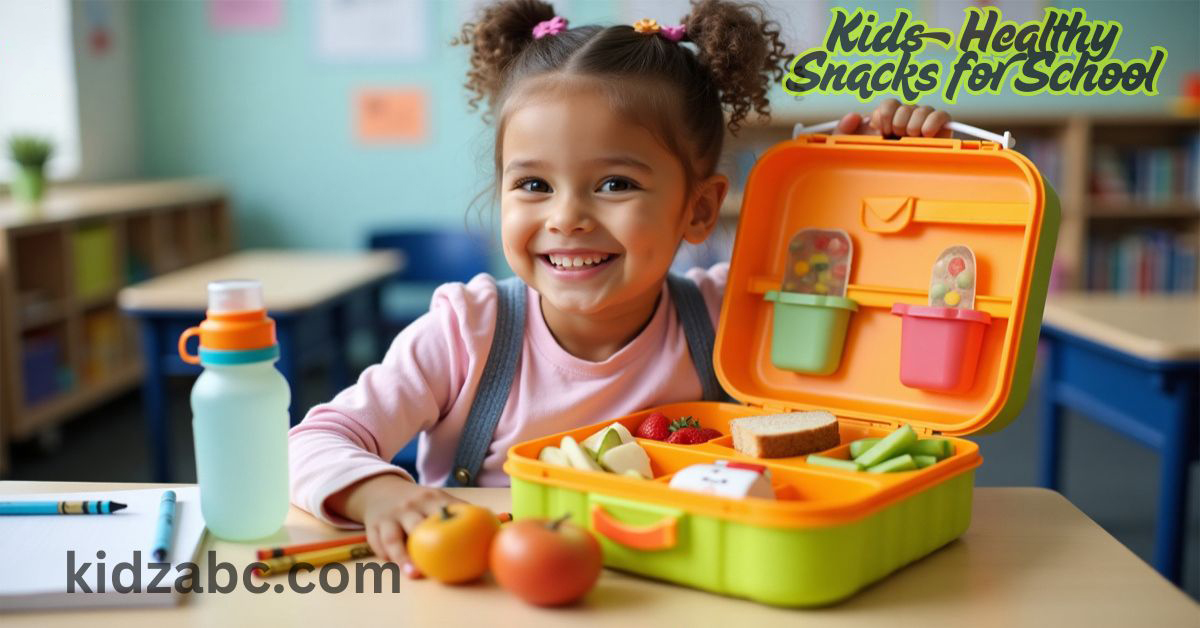
🥗 Why Prioritize Kids Healthy Snacks for School?
Children’s dietary habits significantly impact their academic performance, energy levels, and overall health. Incorporating healthy snacks into their school routine ensures they receive essential nutrients, aiding in:
- Enhanced Concentration: Nutrient-rich snacks like fruits and whole grains support cognitive functions and help kids stay focused on their schoolwork without energy crashes that come from sugary or processed foods.
- Sustained Energy: Balanced snacks maintain consistent blood sugar levels, preventing mid-day slumps and keeping kids energized throughout the day.
- Healthy Growth: A diet that includes healthy snacks provides key vitamins and minerals that support strong bones, immune function, and overall physical development.
🍌 Fresh Fruits: Nature’s Sweet Treats
Fruits are naturally sweet and highly nutritious, making them an excellent snack for kids. They are rich in vitamins like vitamin C, antioxidants, and dietary fiber that supports digestion and immunity.
- Apples: Packed with fiber and vitamin C, apples help maintain digestive health and immunity. Slice them and pair with almond or peanut butter for added protein.
- Bananas: High in potassium, bananas are great for energy. Their natural sugars make them a satisfying snack, and they pair well with a smear of nut butter.
- Grapes: Easy to pack and fun to eat. They contain antioxidants like resveratrol that support heart health. Freeze them for a refreshing twist.
- Berries (Strawberries, Blueberries, Raspberries): Loaded with antioxidants and vitamin C. Serve them plain, with yogurt, or on fruit skewers for a fun presentation.
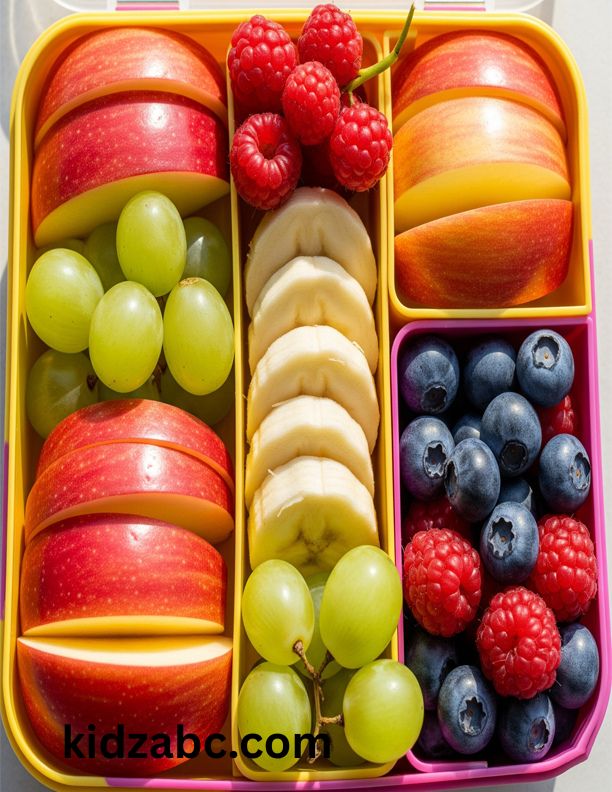
🥕 Crunchy Veggies: The Perfect Dip Companions
Vegetables are low in calories but high in essential nutrients like vitamins A, C, and K, and dietary fiber. They’re excellent for keeping kids full and energized without added sugars.

- Carrot Sticks: A good source of beta-carotene and fiber. Their natural sweetness makes them appealing to kids.
- Cucumber Slices: Very hydrating due to high water content. Refreshing and crisp.
- Bell Pepper Strips: Rich in vitamin C and available in various colors. Sweet and visually appealing.
- Cherry Tomatoes: Contain lycopene, an antioxidant linked to reduced risk of chronic diseases. Great as a bite-sized snack.
Dip Ideas:
- Hummus: Made from chickpeas, it adds protein and healthy fats. Flavored hummus (roasted red pepper, garlic) can enhance the taste.
- Greek Yogurt Dip: High in protein and calcium. Can be flavored with herbs for a savory dip.
🥯 Whole Grains: Sustained Energy Sources
Whole grains provide complex carbohydrates, fiber, B vitamins, and iron. These are vital for sustained energy and focus during school hours.
- Whole Grain Crackers: A convenient snack option that pairs well with cheese or nut butter. Look for low-sodium versions with minimal added sugars.
- Oatmeal Bars: Homemade versions with rolled oats, honey, dried fruits, and seeds provide lasting energy and satisfy a sweet tooth healthily.
- Whole Wheat Pita: Slice into triangles and pair with hummus or stuff with veggies and cheese for a wholesome mini sandwich.
- Popcorn: Air-popped popcorn is a whole grain snack that’s fun and crunchy. Add a pinch of sea salt or cinnamon for flavor.

🧀 Dairy Delights: Calcium and Protein Boosters
Dairy snacks contribute calcium, vitamin D, and protein, which are essential for developing strong bones and teeth in children.
- String Cheese: Portable and fun to peel, string cheese is rich in calcium and protein.
- Greek Yogurt: Higher in protein than regular yogurt. Top with honey and berries to add flavor and antioxidants.
- Cottage Cheese: Soft and easy to eat, great when mixed with fruits like pineapple or peaches.
- Cheese Cubes: Combine with fruit (like grapes or apple slices) on skewers to create a balanced snack that’s fun to eat.
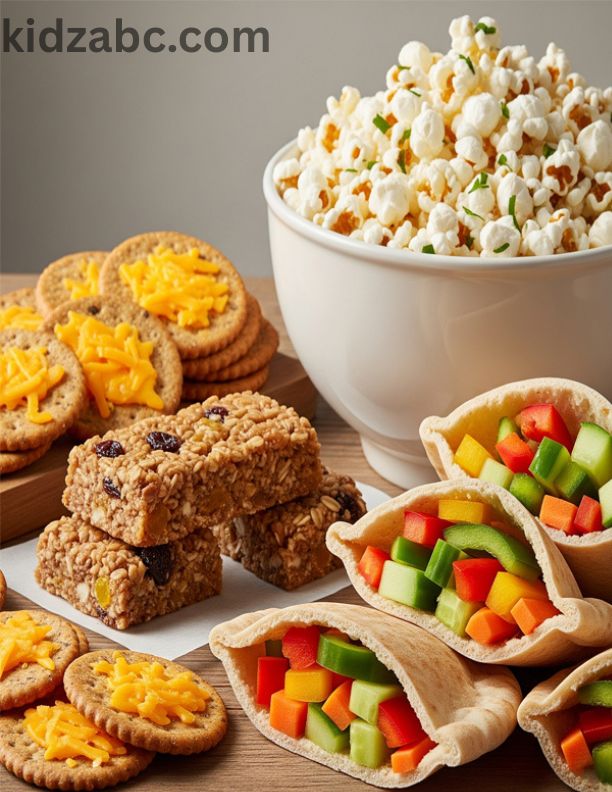
🥜 Protein-Packed Snacks: Building Blocks for Growth
Protein supports muscle development, satiety, and immune function. Adding protein to school snacks helps kids feel full and focused longer.
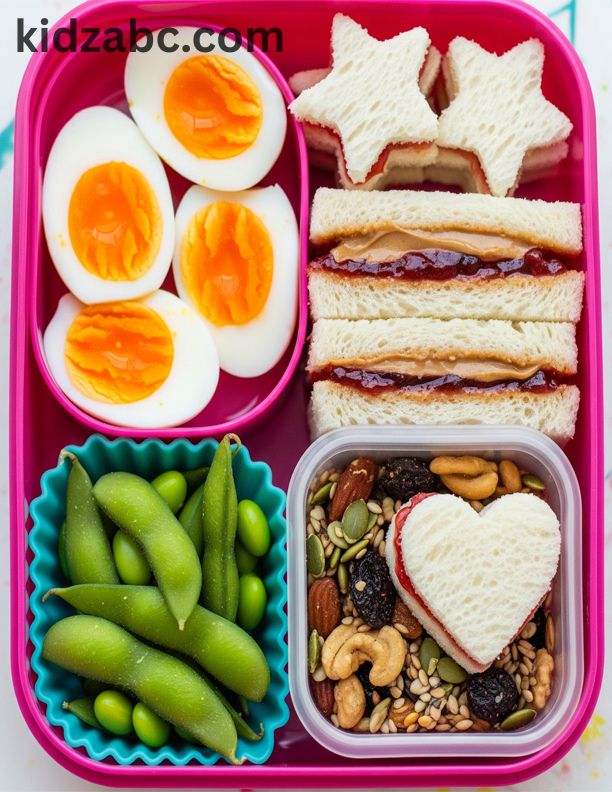
- Hard-Boiled Eggs: A complete protein source. Peel in advance and add a sprinkle of salt or paprika for flavor.
- Nut Butter Sandwiches: Whole grain bread with almond or peanut butter is filling and delicious. Cut into fun shapes with cookie cutters.
- Trail Mix: Combine unsalted nuts, sunflower seeds, raisins, dried cranberries, and a few dark chocolate chips for a healthy mix.
- Edamame: Young soybeans steamed and lightly salted. High in plant-based protein and fiber.
🍪 Homemade Treats: Healthy Indulgences
Sweet treats don’t have to be unhealthy. When made at home, they can be packed with nutrients and low in added sugar.
- Banana Muffins: Use ripe bananas, oats or whole wheat flour, and honey instead of sugar. Great for batch cooking.
- Oatmeal Cookies: Include raisins, coconut flakes, or dark chocolate chips. Opt for olive oil or applesauce in place of butter.
- Fruit Kabobs: Alternate colorful fruits like kiwi, strawberries, melon, and grapes on skewers. A fun way to encourage fruit consumption.
- Chia Pudding: Mix chia seeds with milk (or almond milk), and let sit overnight. Add berries, nuts, or a drizzle of honey in the morning.

🥤 Hydration: The Overlooked Essential
Staying hydrated is crucial for mental alertness and physical well-being, especially during school hours.
- Water: Always the best option. Encourage reusable bottles.
- Infused Water: Add lemon, cucumber, or mint for a refreshing twist without added sugar.
- Milk: Offers calcium and protein. Opt for low-fat or dairy alternatives like soy or almond milk.
- Smoothies: Blend fruits with yogurt, milk, or greens. Easy to prep ahead and pour into a thermos.

🎒 Snack Packing Tips for School
Packing healthy school snacks isn’t just about nutrition — it’s also about keeping food safe, fresh, and fun for your child. Below are some essential snack-packing strategies every parent should know:
1. Use Insulated Containers – Keep perishables fresh and safe
Perishable items like yogurt, cheese, and sliced fruits can spoil quickly if not kept at the right temperature.
- Thermal or insulated lunchboxes help maintain the proper temperature for several hours.
- Hot items like soup or pasta should be packed in a vacuum-sealed thermal jar.
- Cold snacks stay fresh longer in a soft-sided insulated lunch bag.
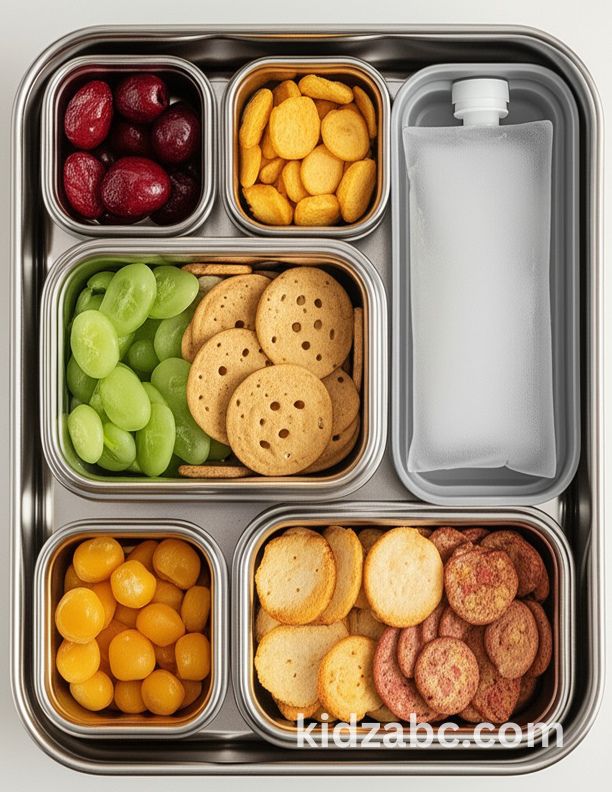
2. Portion Control – Avoid overeating with smaller containers
Overpacking can lead to food waste and overeating. Using small, divided containers helps you serve the right amount.
- Choose bento-style lunchboxes with separate compartments to balance snacks like fruits, veggies, and protein.
- This also makes it easier for kids to visually identify their options and eat a variety of foods.
3. Include an Ice Pack – Maintain safe food temperatures
Adding an ice pack helps preserve food freshness and prevents bacterial growth.
- It’s especially important for dairy products, meats, or dips like hummus.
- Most soft-sided lunch bags come with a dedicated slot for gel packs.
4. Label Everything – Manage allergies and reduce mix-ups
Always label your child’s lunchbox, snack containers, and drink bottles.
- Include your child’s name and classroom in case items are lost or mixed up.
- For kids with food allergies, use bold, visible labels that say things like “Nut-Free” or “Dairy-Free” to avoid confusion
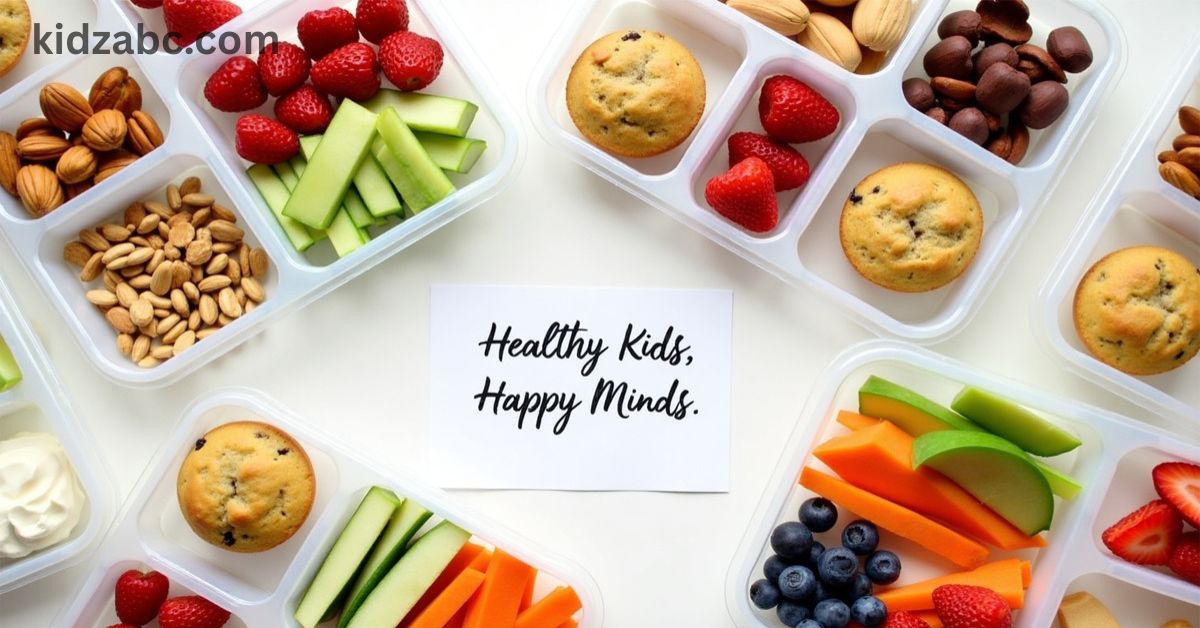
Incorporating these kids healthy snacks for school into your child’s daily routine can significantly impact their academic performance, energy levels, and overall health. By choosing a variety of fruits, vegetables, whole grains, dairy, and protein-rich foods, you’re setting the foundation for lifelong healthy eating habits.


